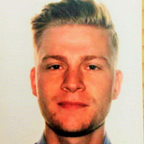The power of collaboration
“Collaboration is at once both intimate and expansive. It depends on opening up to another person and in that process of opening up, building a bond of trust supportive enough to create something else.”
Amy Tobin, 2016
At the heart of Aarhus Makers is collaboration: how a group of like-minded individuals living and working in the arts and culture scene in Denmark, can co-operate and work together to create, innovate and improve.
There are many examples of the benefits of collaborative projects and how they can strengthen, unite and support people and their communities. For this post I’ve pulled out just a few outstanding ones from across the world. These show how collaborative projects focusing on the creation of art and design products, similar in their goals and principles to Aarhus Makers, are helping to make a difference.
Jardim Gramacho, Rio de Janeiro, Brazil
Brazilian artist Vik Muniz visited the world’s largest landfill site, Jardin Gramacho in Rio de Janeiro, to meet the hundreds of workers who live there, and to collaborate on a project with them.
Although Muniz supervised the project, it was the workers themselves who created a series of vast self-portraits from the millions of recyclable items they recovered during their daily work in Jardin Gramacho. The intention of this collaboration was to offer the workers new perspectives on themselves as creators and on their impoverished communities, in the face of dangerous working conditions.
The self-portraits were sold at auctions with a large proportion of the proceeds being returned to the workers, as well as Muniz and his film-crew donating over $200,000 to the workers’ co-operative.
Heidelberg Project, Detroit, Michegan
The Heidelberg Project, so named after the street in Detroit, was started in 1986 by Tyree Guyton.
His motivation was to create an outdoor art environment that would benefit Detroit’s rapidly deteriorating McDougall-Hunt district. This was Guyton’s childhood neighborhood. It had been affected by the 1960s riots and he sought to revitalize and improve it through art.
Creating the Heidelberg Foundation, Guyton and his grandfather began painting a number of dilapidated and abandoned buildings with brightly coloured polka dots. They fixed large found objects, mosaics and painted boards to many of the structures and quickly transformed the area, where many people were once afraid to walk, into a community in which residents could have a sense of pride.
Today the Heidelberg Project organisation uses art to promote discussion, offering young adults free workshops to inspire collaboration, creativity and self confidence in order to help enrich the socio-economic health of the neighbourhood.
‘Art for You’, Hanoi, Vietnam
In a city where contemporary art had historically been overlooked and under-developed, a group of artists from Hanoi collaborated to create an art fair in a department store, entitled ‘Art for You’.
The purpose of the collaboration was to create art work that engaged the majority of ordinary visitors, that they could enjoy and afford, thus seeking to remove the elitist nature associated with traditional art fairs.
The success of the ‘Art for You’ movement from its beginning in the department store has now seen 90 artists collaborating at multiple fairs, helping to boost a growing art economy and an appreciation for contemporary art in the city.
Although it is still early days, the collaborative efforts of all the contributors to Aarhus Makers are providing a means for a far greater audience to see their work as well as seeking to engage and reach out to new creators to get involved.
If you are a creator yourself, or know someone who might be interested in becoming an Aarhus Maker, please don’t hesitate to get in touch with us.
“Even the most personal form of creative expression can be transformed by collaboration.”
Linda Hill, TED talk, 2014
Sources
Amy Tobin, ‘I’ll Show You Mine, If You Show Me Yours: Collaboration, Consciousness-Raising and Feminist-Influenced Art in the 1970s’, Tate Papers, no.25, Spring 2016, https://www.tate.org.uk/research/publications/tate-papers/25/i-show-you-mine-if-you-show-me-yours
